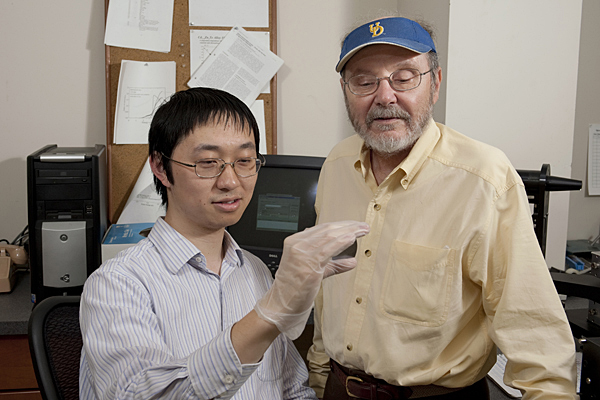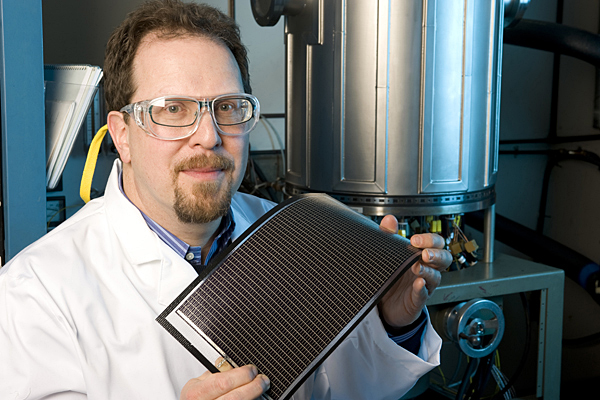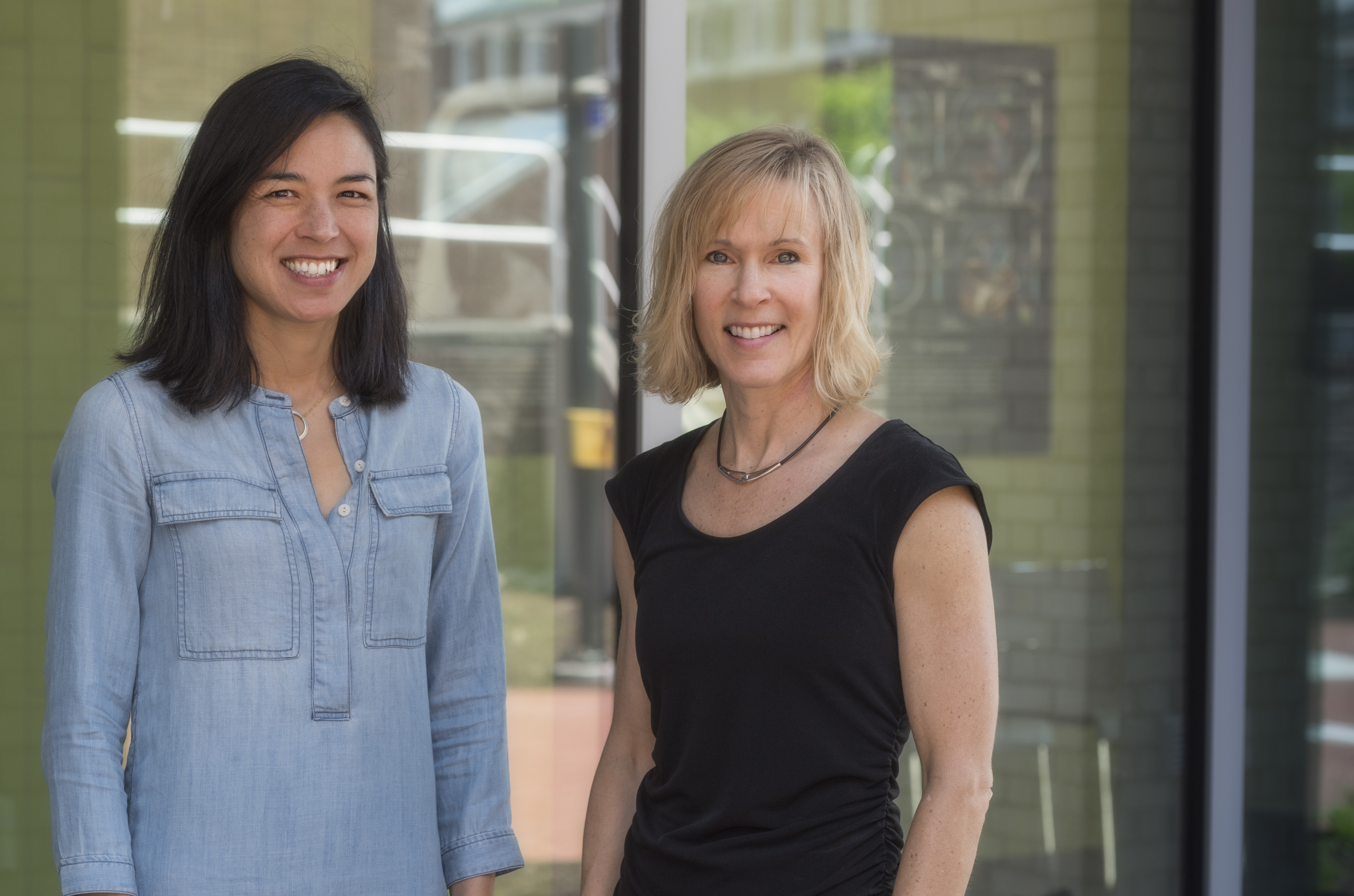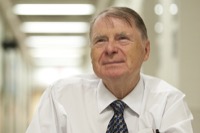


Solar research shines
UD wins $9.1 million in advanced solar research grants
1:32 p.m., Sept. 9, 2011--The University of Delaware has won $9.1 million for solar energy research and development -- the highest funding awarded to a university -- through the SunShot Initiative sponsored by the U.S. Department of Energy (DOE).
“America is in a world race to produce cost-competitive renewable energy that can reduce our reliance on fossil fuels, create manufacturing jobs across the nation and improve our energy security,” said Energy Secretary Steven Chu in a DOE news release announcing the grants. The 69 projects totaling nearly $148 million “will spur American innovation to help reduce the costs of clean, renewable solar energy and re-establish U.S. global leadership in this fast-growing industry,” Chu said.
Research Stories
Chronic wounds
Prof. Heck's legacy
UD won five grants and one subcontract in the DOE SunShot Initiative, far outpacing all other major research universities competing for funding.
Of the 24 states represented, Delaware received the third highest funding overall, after California and Colorado, with all of the First State’s solar grants coming to UD.
Mark Barteau, UD’s senior vice provost for research and strategic initiatives, attributed the University’s success in the competition to the outstanding capabilities and leadership of the Institute of Energy Conversion (IEC), which is involved in each of the grants awarded to UD. The institute was named a University Center of Excellence for Photovoltaic Research and Education by DOE and the National Renewable Energy Laboratory in 1992.
“It is a bright day for UD research,” Barteau said. “These solar projects mark a major advance in renewable energy research and development that will benefit our University community, industry and the nation through the important discoveries that will be made, and the students who will be trained in next-generation clean energy technologies.”
One UD project was funded through the Next Generation Photovoltaics II program, which focuses on the transfer of applied research into technologies that boost photovoltaic efficiency and performance, lower costs and create secure, sustainable supply chains.
• Juejun Hu, assistant professor in UD’s Department of Materials Science and Engineering, will lead a $1,278,110 project to create a coating on solar cells that will increase the absorption of light and increase solar cell efficiencies. The four-year project will be conducted in collaboration with IEC Director Robert Birkmire and Kathleen Richardson, professor and director of the School of Materials Science and Engineering at Clemson University.
Four UD projects and one subcontract to UD (all three-year projects) were funded through the Foundational Program to Advance Cell Efficiency, a joint effort of DOE and the National Science Foundation that seeks to close the gap between the efficiencies of prototype cells achieved in the lab and cells produced on manufacturing lines.
• Erten Eser, associate scientist at IEC, will lead a $960,000 project to develop a fundamental understanding of how sodium impacts the properties of thin-film copper indium gallium diselenide (CIGS) solar cells. The research team seeks to pinpoint how sodium improves CIGS solar cell performance and demonstrate approaches to incorporating sodium that give equivalent performance independent of process schemes and substrates. Angus Rockett, professor of materials science and engineering at the University of Illinois, is a collaborator.
• Steve Hegedus, IEC scientist, will lead a $3,300,000 project, along with Birkmire and Ujjwal Das of IEC, to lower the cost of crystalline silicon solar cells by reducing both materials and manufacturing costs. The team will use a new device design patented by UD that incorporates silicon structures deposited at low temperatures and lasers to pattern and form the contacts on the back of the solar cell. Tonio Buonassisi, assistant professor of mechanical engineering and manufacturing at MIT, and Marco Mendes at JPSA Advanced Laser Technologies are collaborators. Four U.S. companies will provide thin-silicon wafers for evaluation and validation of the new solar cell design architecture.
• William Shafarman, IEC scientist, will lead a $1,167,147 project to make CIGS manufacturing less costly by developing the science and technology associated with halving the thickness of the CIGS absorber layer and using a superstrate cell configuration. This cell structure, which requires only one sheet of glass, on the light-exposed side of the cell, will facilitate optical enhancement approaches needed for high efficiency with thinner CIGS. Dennis Prather, Alumni Professor of Engineering in the UD Department of Electrical and Computer Engineering, is a collaborator.
• Shafarman also will lead a $1,200,000 project to advance processing technologies using chemical reactions to form CIGS films from metal layers. The team will investigate pathways to improved module yield and performance by modifying the interface between the absorber layer and back contact, and increased throughput by reducing reaction time to less than five minutes. Tim Anderson, Distinguished Professor of Chemical Engineering at the University of Florida and director of the Florida Energy Systems Consortium, is a collaborator.
• UD also will receive a subcontract in the amount of $1,200,000 over three years from the National Renewable Energy Laboratory in Golden, Colo., as part of their program “Enabling the CIGS Thin Film PV Technology to Meet the DOE Goal of $0.50/W Module Price.” Co-principal investigator Birkmire will lead the UD effort, which will utilize several of IEC’s unique capabilities -- rapid growth of CIGS films using a roll-to-roll deposition system, a hydride gas reactor system for CIGS film growth and annealing, and device fabrication and characterization facilities.
Article by Tracey Bryant











